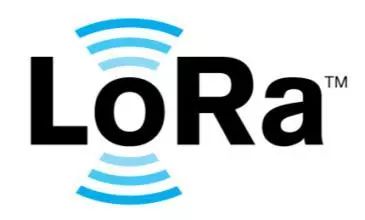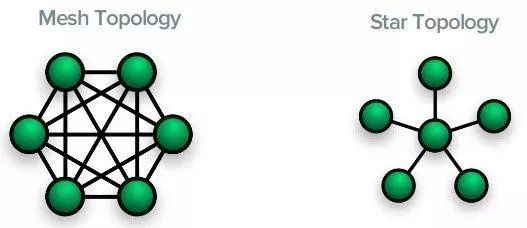The Internet of Things is an important part of a new generation of information technology. Since the development of information technology, today's human-to-human communication needs have turned to the interconnection between people and things and between things and things, ultimately achieving the interconnection of everything. Sensor technology, embedded system technology and communication technology are three important components of the Internet of Things, and communication technology is the material basis for information transmission and logistics between various units of the Internet of Things. Today, I will discuss LORA communication technology and NB. - IOT communication technology. LORA communication technology LORA is a kind of LPWAN communication technology. It is an ultra-long-distance wireless transmission scheme based on spread spectrum technology adopted and promoted by Semtech of the United States. It provides users with a simple way to achieve long-distance, long battery life, and large The system of capacity, and then expands the sensory network, at present, LORA mainly operates in the global free frequency band, including 314, 868, 915MHz and so on. LORA communication protocol The network layer protocol based on LORA technology is mainly LORAWAN, which defines the network communication protocol and system architecture. The communication system network of LORAWAN is a star network architecture and is mainly divided into three types: 1. Point-to-point communication, point A initiated, point B received 2. Star network polling, point-to-multipoint mode, a central point and N nodes, starting from the node, the central point receiving and confirming that the reception is completed, the next node continues to upload until N nodes complete. 3. Star-shaped network concurrency is also a point-to-multipoint communication. The difference is that multiple nodes can communicate with the central point at the same time. This saves the power consumption of the nodes and avoids the failure of the individual nodes and causes network defects. The stability of the network has been improved. LORA band LORA uses an unlicensed ISM band, but the use of ISM bands varies from country to country. In the Chinese market, the China-based LORA Application Alliance (CLAA) led by ZTE recommends 470-518 MHz. Radio meters use a band of 470-510 MHz. Because LORA works in the unlicensed band, it is not necessary to apply for network construction. The network architecture is simple and the operating costs are low. The LORA Alliance is vigorously promoting the standardized Lo-RaWAN protocol globally so that devices complying with the LoRaWAN specification can be interconnected. Application of LORA LORA wireless technology uses free global frequency bands. The base station or gateway has strong penetration capabilities. The distance between sensors in the suburbs can reach 15-30 KM. LORA uses an asynchronous protocol, and nodes can perform different lengths according to specific tasks. Sleep, supplemented by lower data rates, allows battery life to be 3 to 10 years, a wide range of coverage, long use times, and LORA nodes can reach a million levels, these notable features make LORA technology can be applied to the requirements In low-power, long-distance, large-scale connected Internet of Things applications, such as intelligent transportation, accurately provide traffic data such as speed, distance, and traffic; intelligent parking, real-time monitoring of parking spaces to achieve transparent information, so as to achieve charges Accurate and reduce the purpose of labor costs; wisdom bridge, through the timely assessment of the bridge status, can reduce the probability of accidents; smart cover, through the monitoring of the cover position, to achieve fewer vehicle accidents, casualties; smart agriculture, through the temperature, humidity, Wind speed and other monitoring. Grasp production conditions and increase production; in addition to smart medical, intelligent ocean, intelligent tracking and so on. NB-IOT Communication Technology NB-IOT is a low-cost, carrier-class, high-reliability, and high-security wide-area IoT technology that can evolve with a cellular network. NB-IOT is built on a cellular network and consumes only a few tens of thousands of kHz. It can be directly deployed. In GSM network, UMTS network and LTE network. The advantages of NB-IOT 1. The capacity of mass connection, in the case of the same base station, NB-IOT can provide 50 to 100 times more access than existing wireless technologies. One sector can support 100,000 connections, the equipment cost is low, the equipment power consumption is low, and the network architecture is optimized. 2. Broad coverage, at the same frequency band, NB-IOT gains 20 db over the existing network, equivalent to an increase of 100 times coverage 3. Low power consumption, NB-IOT can achieve long standby with PSM and eDRX, its terminal module can be up to 10 times standby time 4. Low cost, NB-IOT and LORA are different, there is no need to re-establish the network, radio frequency and antenna can be reused, and the expected module price of the company will not exceed 5 US dollars. Key technologies of NB-IOT 1. How NB-IOT is deployed The NB-IOT occupies 180 KHz bandwidth. Considering the protection bands on both sides, the total is 200 KHz. It supports three deployment scenarios. They are deployed independently. The GSM communication bandwidth is 200 KHz, which just gives NB-IOT bandwidth a space, and there are still two sides. The 10KHz guard interval also does not overlap with the frequency band in LTE, so it is suitable for re-cultivation in the GSM frequency band. 2. NB-IOT physical layer characteristics The physical channel of the NB-IOT is largely based on LTE. The downlink of the NB-IOT adopts orthogonal frequency multiple-access technology and the carrier bandwidth is 180 KHz, which ensures the compatibility of downlink and LTE. For the downlink, the NB-IOT designs three physical channels, including a narrow-band physical broadcast channel, a narrowband reference channel, a primary synchronization signal, and a secondary synchronization channel. By shortening the type of the downlink physical channel, both the characteristics of the downlink transmission bandwidth and the coverage area requirement are enhanced. NB-IOT communication distance The signal coverage of a mobile network depends on the base station density and the link budget. The NB-IoT has a 164dB link budget, GPRS link budget 144dB, LTE is 142.7dB. Compared with GPRS and LTE, the NB-IoT link budget has a 20 dB increase, and the open signal coverage can be increased by seven times. 20 dB is equivalent to the loss of the signal through the outer wall of the building, and the signal coverage of the NB-IoT indoor environment is relatively better. In general, the communication distance of the NB-IoT is 15 km. NB-IoT, LORA cost comparison No matter how powerful the LPWAN protocol is, it needs to consider its low cost, otherwise they are not a feasible IoT solution. LORA has advantages in this regard. The overall cost of the LoRaWAN module is around $8-10, which is about half the price of cellular LTE modules such as NB-IoT. The higher the complexity of the NB-IoT network, the higher the costs associated with intellectual property (licensed bands) and the higher total cost of NB-IoT. NB-IoT upgrades to advanced 4G/LTE base stations are more expensive than LORA deployments through industrial gateways or tower gateways. As the market matures, the cost of LORA technology is expected to decline further. We pay attention to the latest developments in the Internet of Things industry, focus on your Pocket of Knowledge of the Internet of Things, aiming to build a common learning knowledge platform, so that you can learn to be convenient and chattering; Ding cool IOT tribe (dkiot888) intentionally do everyone's servant". Dingyi Hongji always upholds the spirit of a craftsman and is responsible for each and every Chinese product. Open Frame For Capacitive Touch All-in-one ShenZhen GreenTouch Technology Co.,Ltd , https://www.bbstouch.com





